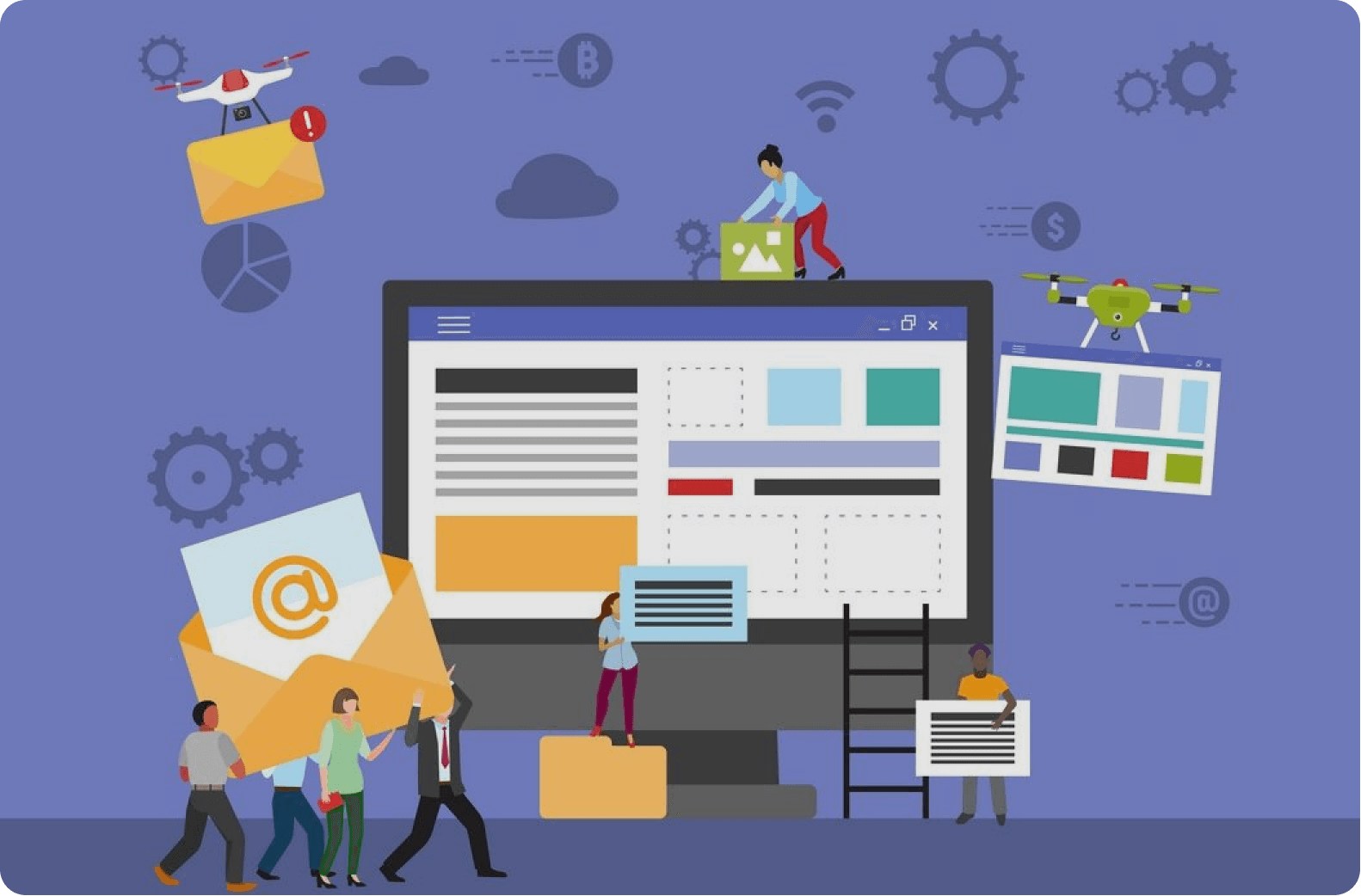1. Minimalist Designs
The minimalistic style continues to rule the design world, focusing on simplicity and practicality.
- Clear Layouts and minimalist designs employ large white spaces to create an uncluttered, clean appearance.
- focused content. The emphasis remains on the primary content. and key messages by eliminating irrelevant elements.
This design style enhances the users’ experience by cutting down on distractions and enhancing navigation. Websites such as Apple and Google demonstrate minimalist design with their clean, user-friendly interfaces.
2. Dark Mode
Dark mode is gaining popularity due to its aesthetic appeal as well as practical benefits.
- Eye Comfort reduces eye strain in low-light conditions.
- Battery efficiency extends the longevity of OLED screen batteries.
Dark mode offers a sleek and sophisticated look. While improving readability and reducing eye fatigue. Popular apps such as Twitter and Instagram have dark modes. Users can switch between dark and light modes based on their preference.
3. Micro-Interactions
Micro-interactions can add an element of interaction and feedback that entices users.
- Subtle Animations: Small animations that react in response to actions of the user. By hovering over a button or filling out a form.
- Feedback Loops provide immediate feedback to users, improving the usability of HTML.
These small animations can help make user experiences more enjoyable and intuitive. For example, you can use the “like” button animation on Facebook to improve user interaction.
4. 3D Elements
Use of 3D elements creates a feeling of realism and depth in web design.
- Interactive Graphics are 3D models that can be interacted with by users
- Visual Appeal Improves visual appeal and engagement.
3D elements provide a lively as well as an immersive user experience for websites. eCommerce sites such as Nike utilize 3D visualizations of products. It provides the most complete overview of their products.
5. Voice User Interface (VUI)
VUI is gaining more importance because of the proliferation of intelligent speakers. Voice-activated assistants.
- Vocal Commands Users can browse the website or perform actions by using voice commands.
- Accessibility improves accessibility for disabled users.
VUI simplifies interactions and can make sites easier to access. For instance, Amazon’s Alexa integration lets users search for items using voice commands.
6. Augmented Reality (AR) Integration
Augmented Reality integration gives users an immersive and interactive experience. Through overlaying digital content on reality.
- Test before You Purchase Try-ons in virtual form for items like furniture or clothing.
- Interactive Experiments: Engaging AR content that improves the user’s experience.
AR integration changes the way people interact with websites. How can you make shopping online and browsing more enjoyable? IKEA’s AR application lets customers see furniture in their homes prior to purchasing.
7. Bold Typography
Bold typography is striking and catches the eye of the user.
- Large fonts: The use of large and bold fonts to highlight the key points.
- Unusual Typefaces: Unique and unique fonts that help to build brand awareness.
Bold typography increases readability and conveys the brand’s character. Websites such as Medium make use of bold fonts to stand out in headlines. Also, they improve the reading experience.
8. Neumorphism
Neumorphism is a blend of skeuomorphism and flat design to give an elegant, natural appearance.
- Soft Shadows: The use of gentle shadows for creating 3D effects.
- Simple Aesthetic Modern and clean style that increases aesthetic appeal.
Neumorphism gives an updated and contemporary look that improves users’ experience. It’s especially effective in creating visually appealing and intuitive icons and playing cards.
9. Scrolling Transformations
Scrolling transforms provide exciting and interactive user experiences.
- Parallax Effects Layers that move with different speeds to create a 3D effect.
- Animated transitions, Smooth transitions that lead users through the information.
Scrolling transforms make navigation visual and interactive. Websites such as Apple employ scrolling animations to show off the product’s features in a captivating manner.
10. Sustainable and Inclusive Design
A sustainable and welcoming design is centered on the creation of environmentally friendly and user-friendly websites.
- Eco-friendly practices: Optimizing websites to decrease the carbon footprint and energy consumption.
- Inclusion Design: Ensuring that sites are accessible to everyone, even those with disabilities.
Sustainability and inclusive practices in design boost the user experience. They make websites more user-friendly and eco-friendly. Websites such as Patagonia emphasize environmentally friendly design practices and reflect their dedication to environmental sustainability.
Conclusion
The most popular trends for designing websites for 2024 are a mix of UX and functionality. From minimalistic designs and micro-interactions to AR. These new trends will alter the way that web users use websites.
Stay ahead of these new trends and incorporate them into the design of your website. You can build appealing and contemporary websites that draw and retain visitors.

